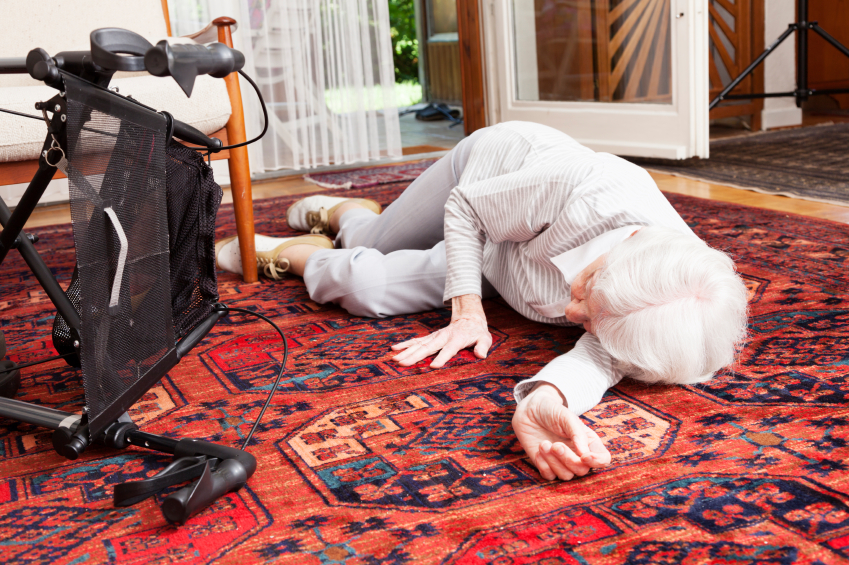Eating Mediterranean Diet Lowers Hip Fracture Risk in Women
Eating Mediterranean Diet Lowers Hip Fracture Risk in Women
Eating a Mediterranean diet full of fruits, vegetables, fish, nuts, legumes and whole grains appears to be associated with a lower risk of hip fracture in women, although the actual risk reduction was small, according to a study published online by JAMA Internal Medicine.
Researchers from the University of Würzburg, Bavaria, Germany, examined whether diet quality affects bone health in postmenopausal women. The authors analyzed data from 40 clinical centers throughout the United States, impacting 90,014 women with an average age of almost 64.
Women who scored the highest for adherence to a Mediterranean diet were at lower risk for hip fractures, although the absolute risk reduction was small.
While higher HEI-2010 or DASH scoring tended to be inversely related to the risk of hip fracture (a lower risk), the results were not statistically significant. There was no association between HEI-2010, DASH and total fracture risk. The highest scores for AHEI-2010 were not significantly associated with hip or total fracture risk, according to the results.
“High diet quality characterized by adherence to a Mediterranean diet is associated with a lower risk for hip fractures. These results support the notion that following a healthy dietary pattern may play a role in the maintenance of bone health in postmenopausal women,” the authors conclude.
Unnecessary Transitions Linked to Medication Errors, Readmissions, Risk of Death
 Unnecessary Transitions Linked to Medication Errors, Readmissions, Risk of Death
Unnecessary Transitions Linked to Medication Errors, Readmissions, Risk of Death
Having coordinated care and a long-term care plan in place that considers the needs of a person with dementia may reduce unnecessary transitions, say the authors of a study published in the Journal of the American Geriatrics Society. For older adults, especially those with dementia, some transitions may be unavoidable and necessary. However, unnecessary transitions are linked to problems such as medication errors, hospital readmissions, and increased risk of death. Good dementia care emphasizes the need for familiar people and familiar environments. This can be more difficult to support when too many transitions take place.
In their study, researchers from the UBC Centre for Health Services and Policy Research in Vancouver, British Columbia, followed 6,876 people aged 65 and older and found a spike in the number of transitions during the first year of dementia diagnosis. Sixty-five percent of the study participants experienced at least one transition during the year of their diagnosis; 17 percent experienced three or more transitions, most of which were hospitalizations. More than 60 percent of people were hospitalized in the year of their diagnosis, and these hospital stays generally lasted for a month or longer.
People experienced a higher number of transitions the year prior to and the year of their death. Receiving a prescription for an anti-psychotic medication as well as living in more rural areas increased risk too.
Receiving ongoing care from a known primary care physician and receiving care consistent with dementia guidelines were linked to fewer transitions.
The year of diagnosis is often overwhelmingly stressful. Still, steps can be taken to lessen transitions and improve care. These include:
- Connection to an ongoing primary care provider
- Early, advanced care planning consistent with one’s wishes
- Having a patient advocate who can help with care coordination
- Increasing caregiver and provider awareness of community support systems
Our Friday Song of the Week – Celebrate
Our Friday Song of the Week – Celebrate
Mindfulness Meditation Improves Lower Back Pain Compared to Usual Care
 Mindfulness Meditation Improves Lower Back Pain Compared to Usual Care
Mindfulness Meditation Improves Lower Back Pain Compared to Usual Care
Adults with chronic back pain were able to relieve their pain through mindfulness stress reduction and cognitive behavioral therapy, according to a study appearing in JAMA.
There is need for treatments with demonstrated effectiveness that are low risk and have potential for widespread availability. Mindfulness-based stress reduction (MBSR) focuses on increasing awareness and acceptance of moment-to-moment experiences.
Daniel C. Cherkin, Ph.D., of Group Health Research Institute, Seattle, and colleagues randomly assigned 342 adults age 20 to 70 years with pain to receive MBSR, cognitive behavioral therapy (CBT), or usual care. The average age of the participants was 49 years; the average duration of back pain was 7.3 years.
The researchers found that at 26 weeks, the percentage of participants with clinically meaningful improvement on a measure of functional limitations was higher for those who received MBSR (61 percent) and CBT (58 percent) than for usual care (44 percent).
“These findings suggest that MBSR may be an effective treatment option for patients with chronic low back pain.”
Exercise May Slow Brain Aging by 10 Years for Older People
 Exercise May Slow Brain Aging by 10 Years for Older People
Exercise May Slow Brain Aging by 10 Years for Older People
Exercise in older people is associated with a slower rate of decline in thinking skills. People who reported light to no exercise experienced a decline equal to 10 more years of aging according to research published in the online issue of Neurology®, the medical journal of the American Academy of Neurology.
Said study author Clinton B. Wright, MD, MS, of the University of Miami in Miami, Fla., and member of the American Academy of Neurology: “Our study showed that for older people, getting regular exercise may be protective, helping them keep their cognitive abilities longer.”
Researchers looked at data on 876 people enrolled in the Northern Manhattan Study who were asked how long and how often they exercised during the two weeks prior to that date. An average of seven years later, each person was given tests of memory and thinking skills and a brain MRI, and five years after that they took the memory and thinking tests again.
Of the group, 90 percent reported light exercise or no exercise. Light exercise could include activities such as walking and yoga. They were placed in the low activity group. The remaining 10 percent reported moderate to high intensity exercise, which could include activities such as running, aerobics, or calisthenics. They were placed in the high activity group.
Researchers found that those reporting low activity levels showed a greater decline over five years compared to those with high activity levels on tests. The difference was equal to that of 10 years of aging. The difference also remained after researchers adjusted for other factors such as smoking, alcohol use, high blood pressure and body mass index.
“Physical activity is an attractive option to reduce the burden of cognitive impairment in public health because it is low cost and doesn’t interfere with medications,” said Wright. “Our results suggest that moderate to intense exercise may help older people delay aging of the brain.”
The study was a collaboration between the University of Miami and Columbia University and was supported by the National Institutes of Health and National Institute of Neurological Disorders and Stroke.









